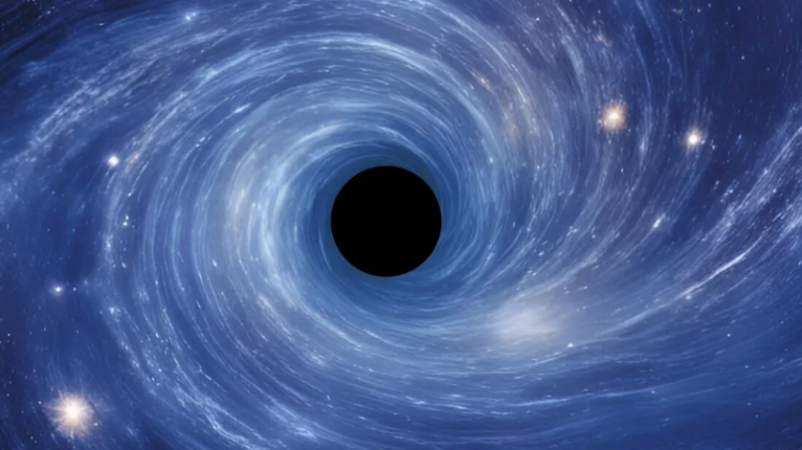A team of scientists has devised a new model for black holes that removes the central singularity—where physics breaks down—offering a more coherent understanding of these mysterious objects. Black holes have an event horizon, a boundary beyond which nothing, not even light, can escape, making direct observation of their cores impossible.
Using Einstein’s 1915 general relativity equations, black holes are predicted to have singularities where values become infinite and the laws of physics collapse. This singularity is problematic because it signals where our models fail.
The researchers modified Einstein’s field equations, applying an “effective theory” that approximates quantum gravity effects without requiring a full quantum gravity framework. This change alters gravity’s behavior in highly curved spacetime, eliminating the singularity.
Instead of a singularity, their model predicts a highly warped but static region at the black hole’s core, where spacetime collapse halts. This region could hypothetically be occupied without contraction, though surviving its immense but finite gravitational forces would be unlikely.
Importantly, these “regular black holes” contain no matter necessarily; the vacuum solutions are possible in classical gravity, too.
While this model removes singularities, it doesn’t end the quest for a full quantum gravity theory. Collapsing stars push physics to extremes where both gravity and quantum effects matter, beyond general relativity’s reach.
The model also suggests matter entering a black hole might exit through a white hole in another universe or a disconnected region—an exotic but necessary possibility if singularities don’t exist. This idea raises further questions needing investigation.
Detecting evidence for these ideas is challenging because singularity-resolving effects likely appear only under extreme gravity, beyond current observational capabilities. However, gravitational waves offer a promising avenue, as they reveal strong gravity regimes and might show effects beyond general relativity.
Additionally, the model predicts a distinctive signature in the early universe’s primordial gravitational wave background, potentially observable with future detections. The theory also implies that black hole evaporation ends with microscopic black holes, which could be dark matter candidates, providing indirect evidence for singularity-free black holes.
This research was published in Physics Letters B in February 2025.

